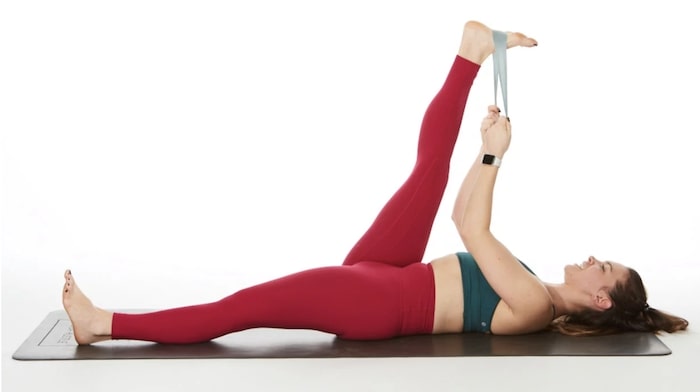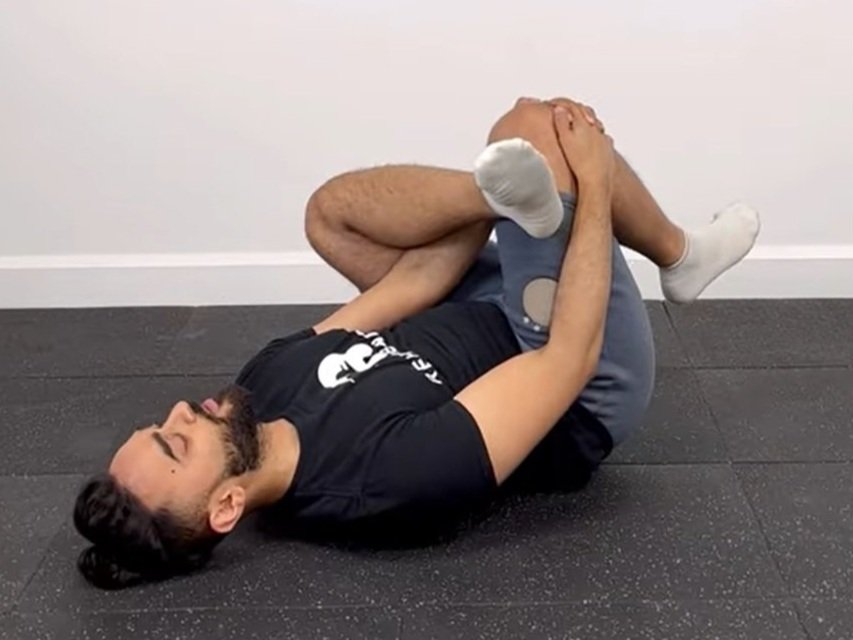3 Exercises to Relieve Sciatica Pain in the Leg: Practical and Effective
The sharp, shooting pain that travels from your lower back down through your leg can be debilitating, making simple activities like walking, sitting, or even sleeping a challenge. Sciatica affects millions of people worldwide, often striking without warning and leaving sufferers desperate for relief. While this condition can significantly impact quality of life, the good news is that targeted exercises can provide substantial pain relief and help restore mobility. Understanding the right movements and how to perform them safely can be the key to reclaiming your comfort and getting back to the activities you love.
Understanding Sciatica: More Than Just Back Pain
Sciatica represents one of the most prevalent causes of lower back and leg pain, affecting approximately 40% of people at some point during their lifetime. This condition occurs when the sciatic nerve—the longest and largest nerve in the human body—becomes irritated, compressed, or inflamed, resulting in characteristic pain that can radiate from the lower back all the way down to the foot.
The sciatic nerve originates from multiple nerve roots in the lower spine, specifically from the L4, L5, S1, S2, and S3 vertebral levels. These nerve roots combine to form two large sciatic nerves that travel through the pelvis, down through the buttocks, and into each leg. When functioning normally, these nerves control muscle movement and sensation throughout the lower extremities.
However, when compression or irritation occurs, the result can be excruciating pain that follows the nerve’s pathway. This pain is often described as sharp, burning, or electric shock-like sensations that can be accompanied by numbness, tingling, or muscle weakness in the affected leg.
Common Causes and Risk Factors
Understanding what triggers sciatica can help in both prevention and treatment. The most common cause is a herniated or bulging disc in the lower spine, which can press against the nerve roots that form the sciatic nerve. As we age, the discs between our vertebrae naturally lose water content and become less flexible, making them more susceptible to tears or ruptures.
Spinal stenosis, a condition where the spinal canal narrows, can also compress the sciatic nerve. This condition is often age-related and develops gradually over time. Piriformis syndrome, where the piriformis muscle in the buttocks becomes tight or spasms, can directly compress the sciatic nerve as it passes through or near this muscle.
Other contributing factors include pregnancy, which can increase pressure on the sciatic nerve due to weight gain and postural changes; prolonged sitting, especially with poor posture; obesity, which increases stress on the spine; and certain occupations that require heavy lifting, twisting, or prolonged driving.
Recognizing Sciatica Symptoms
Sciatica symptoms can vary significantly in intensity and presentation, but typically include pain that radiates from the lower back through the buttock and down the back or side of one leg. The pain may worsen when sitting, coughing, or sneezing, and can range from a mild ache to sharp, excruciating pain that makes movement difficult.
Numbness and tingling sensations, often described as “pins and needles,” may accompany the pain. Some individuals experience muscle weakness in the affected leg, which can affect walking or the ability to move the foot or toes. In severe cases, there may be loss of bladder or bowel control, which requires immediate medical attention.
The Role of Exercise in Sciatica Management
Exercise therapy has emerged as one of the most effective non-surgical treatments for sciatica pain. Research consistently demonstrates that specific, targeted exercises can reduce pain intensity, improve function, and prevent recurrence more effectively than passive treatments like bed rest or heat therapy alone.
The therapeutic benefits of exercise for sciatica work through multiple mechanisms. Gentle movements help improve blood flow to the affected area, delivering essential nutrients and oxygen while removing inflammatory waste products. Exercise also promotes the release of endorphins, the body’s natural pain-relieving chemicals, which can help reduce discomfort and improve mood.
Additionally, targeted stretching and strengthening exercises can address the underlying mechanical issues that contribute to nerve compression. By improving flexibility in tight muscles and strengthening weak supporting muscles, exercise can help restore proper spinal alignment and reduce pressure on the sciatic nerve.
Three Essential Exercises for Sciatica Relief
The following three exercises have been specifically selected for their safety, effectiveness, and ease of performance. Each targets different aspects of sciatica-related dysfunction and can be performed at home with minimal equipment.
Exercise 1: Seated Spinal Twist with Glute Stretch

This multi-component exercise addresses two common contributors to sciatica: tight gluteal muscles and reduced spinal mobility. The gluteal muscles, particularly the piriformis, can compress the sciatic nerve when tight or in spasm. Meanwhile, gentle spinal rotation can help improve intervertebral disc health and reduce nerve root compression.
Detailed Instructions:
Begin by sitting on a comfortable surface such as a yoga mat or carpeted floor. Ensure you have adequate space to move freely without obstruction. Extend both legs straight in front of you, maintaining good posture with your spine erect and shoulders relaxed.
Cross your affected leg over your unaffected leg, placing your foot flat on the floor beside your opposite knee. The position should feel stable and comfortable, not forced or strained.
Using both hands, gently clasp around your bent knee, drawing it toward your chest while simultaneously rotating your torso away from the bent leg. For example, if your right leg is crossed over, rotate your torso to the left while pulling the right knee toward your chest.
Hold this position for 15-20 seconds while maintaining steady, deep breathing. Focus on feeling a gentle stretch through your buttock and outer hip of the crossed leg, as well as a mild rotation through your spine.
Slowly release the stretch and return to the starting position. Rest for 10-15 seconds before repeating. Perform 3-4 repetitions, ensuring that each movement feels comfortable and controlled.
Important Considerations:
Never force the stretch or push through sharp pain. The sensation should be one of gentle tension, not discomfort. If you experience increased leg pain or neurological symptoms during this exercise, discontinue immediately and consult a healthcare provider.
Exercise 2: Supine Hamstring Stretch with Knee Flexion

Tight hamstring muscles are extremely common in individuals with sciatica and can contribute to increased tension on the sciatic nerve. This exercise specifically targets hamstring flexibility while maintaining a safe, supported position that minimizes stress on the lower back.
Comprehensive Technique:
Lie flat on your back on a firm, comfortable surface such as a yoga mat or carpet. Keep your head supported with a small pillow if needed for comfort. Begin with both knees bent and feet flat on the floor to maintain a neutral spine position.
Slowly bring your affected leg toward your chest by bending your hip and knee. Use your hands to support the leg just below the knee or behind the thigh, avoiding pressure directly on the kneecap.
From this position, gently straighten your knee, extending your leg toward the ceiling as far as comfortable. You should feel a stretch along the back of your thigh. Do not force the leg to full extension if it causes discomfort.
Hold the stretched position for 2-3 seconds, then slowly bend your knee back toward your chest. This controlled movement helps improve circulation and gradually increases flexibility.
Repeat this flexion and extension movement for 10 repetitions, completing 3 sets with 30-60 seconds of rest between each set. Throughout the exercise, maintain steady breathing and keep your supporting leg stable on the floor.
Modification Options:
If you have difficulty reaching your leg comfortably, you can use a towel or resistance band looped around your foot to assist with the stretch. This modification allows you to maintain proper form while gradually improving flexibility.
Exercise 3: Seated Figure-4 Piriformis Stretch

The piriformis muscle, located deep in the buttock region, can directly compress the sciatic nerve when tight or inflamed. This stretch specifically targets the piriformis and surrounding deep hip rotator muscles, helping to reduce nerve compression and alleviate pain.
Step-by-Step Execution:
Sit in a sturdy chair with your feet flat on the floor and your back supported. Maintain good posture with your spine erect and shoulders relaxed. The chair should be at a height that allows your hips and knees to be at approximately 90-degree angles.
Carefully lift your affected leg and place your ankle on top of your opposite knee, creating a figure-4 position. Your lifted leg should rest comfortably on your supporting leg without strain.
Place one hand on your elevated ankle for support and the other hand on your elevated knee. Gently apply downward pressure on your knee while simultaneously leaning your torso forward from your hips.
You should feel a deep stretch in your buttock and outer hip of the elevated leg. The stretch should be comfortable and sustainable, not sharp or painful.
Hold this position for 15-20 seconds while maintaining slow, steady breathing. Focus on relaxing into the stretch rather than forcing it.
Slowly release the pressure and return to the upright position. Rest for 10-15 seconds before repeating. Perform 3-4 repetitions, allowing the muscle to gradually relax and lengthen with each repetition.
Safety Precautions:
If you experience increased leg pain, numbness, or tingling during this stretch, reduce the intensity or discontinue the exercise. Some individuals with acute sciatica may find this position initially uncomfortable and should progress gradually.
Essential Guidelines for Safe Exercise Performance
Successfully managing sciatica through exercise requires attention to proper technique, appropriate progression, and safety considerations. Following these guidelines will help maximize benefits while minimizing risk of injury or symptom exacerbation.
Creating the Optimal Exercise Environment
Perform these exercises in a quiet, comfortable space where you can move freely without distractions. Wear loose, comfortable clothing that doesn’t restrict movement. Ensure adequate lighting and ventilation, and have water available to stay hydrated.
Use a quality exercise mat or towel to provide cushioning and stability during floor exercises. If needed, have pillows or bolsters available for additional support or comfort modifications.
Breathing and Mindfulness Techniques
Proper breathing is crucial for exercise effectiveness and relaxation. Maintain steady, deep breathing throughout each exercise, avoiding the tendency to hold your breath during stretches. Inhale deeply through your nose and exhale slowly through your mouth, allowing your body to relax with each breath.
Focus on the sensations in your body during each exercise, distinguishing between therapeutic stretch sensations and potentially harmful pain. This mindful approach helps prevent overexertion and promotes better exercise outcomes.
Progression and Frequency Recommendations
Begin with shorter hold times and fewer repetitions, gradually increasing as your tolerance improves. Start with 10-15 second holds if 15-20 seconds feels too challenging initially. Similarly, begin with 2-3 repetitions if 3-4 feels excessive.
Perform these exercises 3-4 times per week, allowing rest days between sessions for recovery. Consistency is more important than intensity—regular, gentle practice will yield better results than sporadic, aggressive exercise sessions.
Warning Signs and When to Stop
Discontinue exercises immediately if you experience sharp, shooting pain down your leg, significant increase in numbness or tingling, sudden muscle weakness, or loss of bowel or bladder control. These symptoms may indicate nerve damage or other serious conditions requiring immediate medical attention.
Mild discomfort or gentle stretching sensations are normal and expected. However, pain that persists or worsens after exercise, or symptoms that interfere with sleep or daily activities, warrant professional evaluation.
Complementary Strategies for Enhanced Results
While these three exercises form an excellent foundation for sciatica management, combining them with additional strategies can enhance their effectiveness and promote faster recovery.
Heat and Cold Therapy
Applying heat before exercise can help relax muscles and improve flexibility, making stretches more effective. Use a heating pad or warm shower for 10-15 minutes before beginning your exercise routine. After exercise, ice application for 10-15 minutes can help reduce any inflammation and provide pain relief.
Posture Awareness and Ergonomics
Poor posture during daily activities can perpetuate sciatica symptoms. Focus on maintaining proper spinal alignment while sitting, standing, and walking. Use ergonomic supports when necessary, and take frequent breaks from prolonged sitting or standing positions.
Gradual Activity Progression
As your symptoms improve, gradually increase your activity level to include walking, swimming, or other low-impact exercises. This progression helps build overall strength and endurance while maintaining the gains achieved through targeted stretching.
Professional Guidance and Support
While these exercises are safe for most individuals with sciatica, working with a qualified physical therapist or healthcare provider can provide personalized modifications and additional treatment strategies. Professional guidance is particularly valuable for individuals with severe symptoms, multiple episodes of sciatica, or underlying health conditions.
Long-Term Outlook and Prevention
Sciatica can be a frustrating and limiting condition, but with proper exercise management and lifestyle modifications, most individuals experience significant improvement in their symptoms. These three exercises provide an accessible, evidence-based approach to pain relief that can be performed safely at home.
Remember that consistency is key to success. Regular practice of these exercises, combined with attention to posture, ergonomics, and overall fitness, can not only provide relief from current symptoms but also help prevent future episodes of sciatica.
The journey to recovery may take time, and progress may be gradual. However, with patience, persistence, and proper technique, these simple yet effective exercises can help you regain comfort, mobility, and confidence in your daily activities. Always listen to your body, progress at your own pace, and seek professional guidance when needed to ensure the safest and most effective recovery possible.

Sophia Rivers is an experienced News Content Editor with a sharp eye for detail and a passion for delivering accurate and engaging news stories. At TheArchivists, she specializes in curating, editing, and presenting news content that informs and resonates with a global audience.
Sophia holds a degree in Journalism from the University of Toronto, where she developed her skills in news reporting, media ethics, and digital journalism. Her expertise lies in identifying key stories, crafting compelling narratives, and ensuring journalistic integrity in every piece she edits.
Known for her precision and dedication to the truth, Sophia thrives in the fast-paced world of news editing. At TheArchivists, she focuses on producing high-quality news content that keeps readers informed while maintaining a balanced and insightful perspective.
With a commitment to delivering impactful journalism, Sophia is passionate about bringing clarity to complex issues and amplifying voices that matter. Her work reflects her belief in the power of news to shape conversations and inspire change.
